KZ’s love affair with balanced armatures seems to be off to a good start. After producing loads of hybrid earphones, the company started to manufacture products with balanced armatures only and will seemingly not stop with the AS10. The KZ BA10 is a co-flagship, as it sits atop the product line together with the aforementioned AS10. It differentiates itself through tuning and design, as it is made of metal and has less of a balanced approach to tuning.
Disclaimer: this unit was provided for the purpose of this review by Linsoul Audio. They sell the product on AliExpress for $76 and Amazon at $81.
TL;DR: recap
| Pros |
Cons |
| Well assembled with good materials
Relatively balanced tuning with added bass Great technical ability Removable cable (2-pin) |
Terrible comfort
Low isolation Flimsy cable |
Rating: 8.5/10
Packaging & Accessories
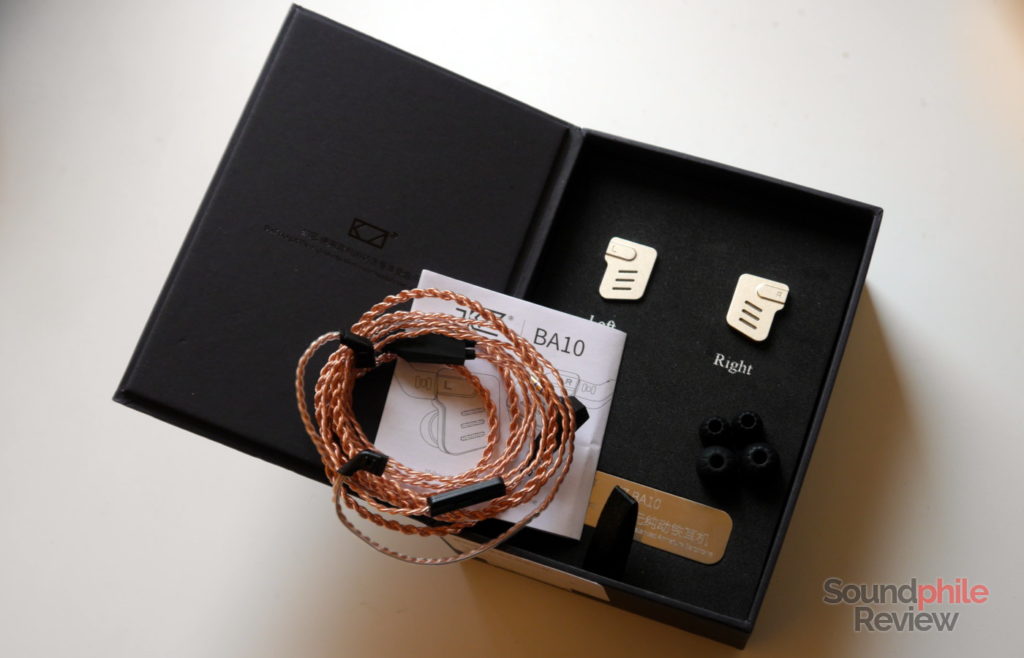
KZ chose to use the same “premium” packaging as they did with the AS10: contrary to most other products they make, the BA10 comes in a large box made of heavy black cardboard and fitted with moulded foam. The contents are, however, the same as in all other cases: a cable and three pairs of silicone eartips.
Design & Comfort
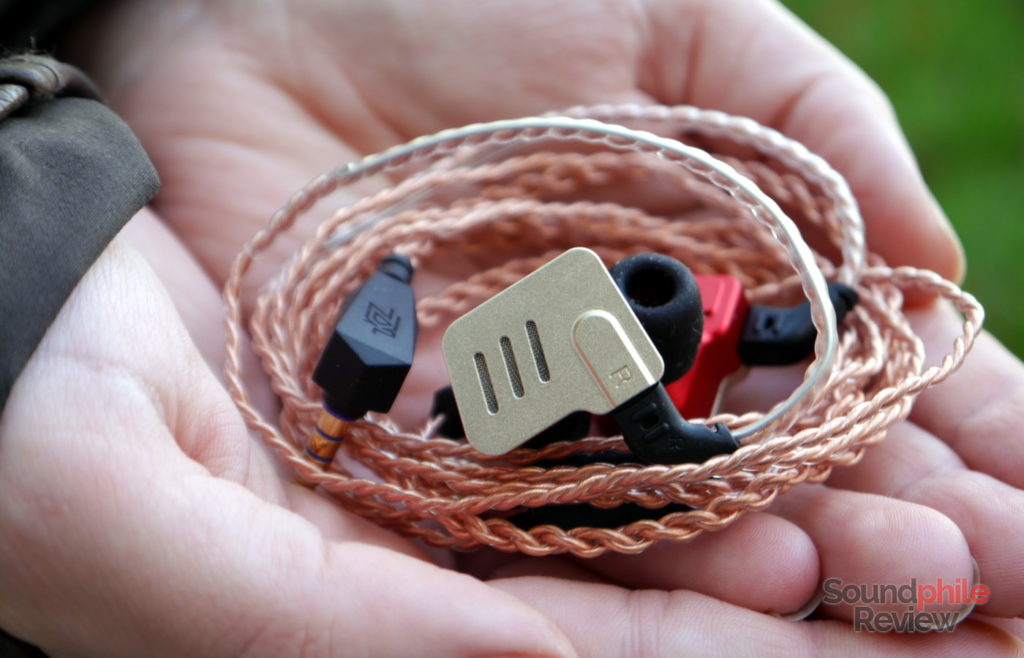
I don’t know who thought of the BA10’s design, but I would surely like to have a word with them. While it is certainly original and new, and a good step away from the shameless copying we saw with the ZS5 and ZS6, it is not practical at all. It is squared and full of clear-cut edges that cut into one’s ears like a hot knife through butter. Okay, it’s not exactly like that, but you get the idea.
The design is in fact bold and innovative and this is laudable. KZ is trying to shed off the copycat image it created for itself, so trying new designs is a good thing for both them and the consumers. The choice of colours is debatable, though, as the red and gold colour scheme chosen for this unit is a bit of an eyesore. That’s up to one’s preferences, as usual, but I would sure have appreciated more sober colours (though a black and red variant exists, too).
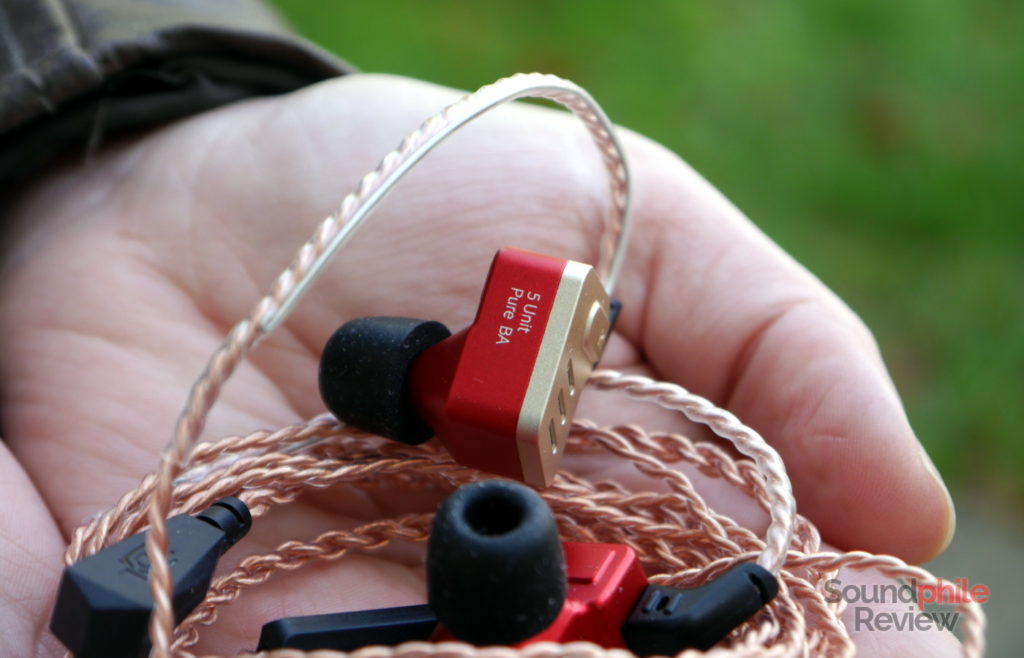
Getting the earphones on is a challenge in itself to say the least. On top of the bizarre design that makes wearing the earphones awkward (if not outright painful at times), the shape of the shells itself makes it difficult to wear them. The squared shapes, coupled with the nozzle that is not angled, make wearing the KZ BA10 a bit of a hassle. In order to get them in I have to pull the lobe down, push the earphones in and then moving the pinnae and the earphones around until I get a good fit. It’s not a good experience, even less a simple one.
Even once you get them on, the experience is not the best one could dream of. Quite the contrary, in fact: the clear-cut edges, as I have already mentioned, are the largest pain point (literally!) of the KZ BA10 as they make it impossible to wear the earphones for long periods. I personally start to feel discomfort after just a few minutes, and in half an hour that becomes plain pain. This is personal experience that can in no way be generalised, but the shapes lead me to believe that very few people – if any – can find the shells comfortable.
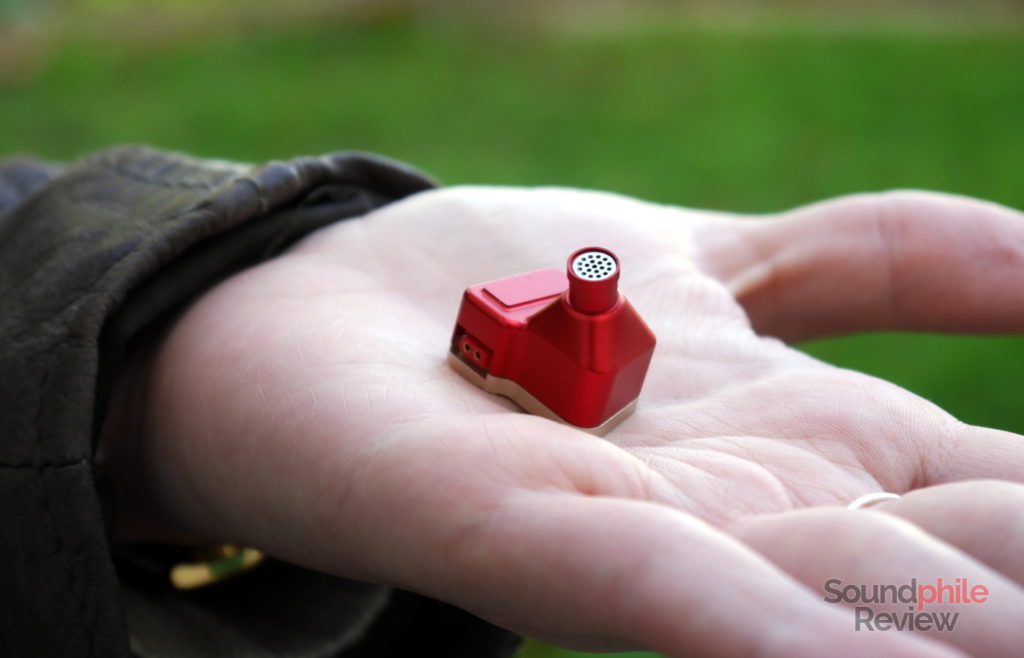
All of this happens regardless of the tips I use, and is true even when using fairly large foam eartips. There is a clear comfort issue at play here. Having that said, I think that the lack of isolation that the KZ BA10 have is at least partially related to this. The BA10 can’t in fact reduce outside noise effectively, making it almost impossible to use them in busy (or anyway noisy) places without raising the volume dramatically.
KZ opted for their usual flimsy cable, although it is not coloured and therefore it exposes the natural hue of copper. It’s not really a good cable, at least after the Y split: the cores are rather flimsy and braided so that they are very prone to kinks; in addition to this, there is a metal rod that gives the cable a shape around the ears, but it is too stiff to be truly comfortable.
Sound & Specs
I tested the KZ BA10 using various sources; among them: RHA Dacamp L1, Cayin N5ii, xDuoo X3-II, Audirect Beam and Venture Electronics Odyssey. I also used an iFi IEMatch. The large majority of source files were standard-res FLACs.
KZ BA10 |
| Frequency response | 20 – 40,000 Hz |
| Impedance | 14 Ω |
| Sensitivity | 105 dB |
If “BA” stands for “balanced armature”, then the name “BA10” is a good summary of what these earphones are: five balanced armatures per channel, with a total of ten armatures. They are similar to the AS10 in this regard, as they do not use any dynamic driver. Despite this, sensitivity is not as high as one could expect: earphones that only use balanced armatures are often in the 120 dB range, but the BA10 are just 105 dB. That won’t shield you from hearing background noises, though!
The KZ BA10 retains the same approach to balance as its peer the AS10, but it has its own twist that makes it actually a bit less balanced. This is because the BA10 has noticeably forward bass that takes the front in the scene, while leaving midrange and treble somewhat behind. This difference is not dramatic, but it is noticeable.
KZ charges a premium for the KZ BA10, and in turn they stand out in terms of technical ability. Instrument separation is really better than in most other products by the company and it rivals with products that cost more than $100 – even in situations when there is a lot going on, clarity is not impacted and it is possible to tell each instrument apart, even hearing tiny details that would normally be lost in the mix. As a practical example, in Senza Paura by Ornella Vanoni, Toquinho and Vinicius De Moraes, it is pretty easy to hear the two singers singing along despite Toquinho whispering and being almost inaudible. Soundstage is wide and deep, defeating the closeness that often characterises in-ear headphones and presenting the listener with a stage that extends around him – please mind that you won’t hear things as if they came from speakers, as the sound will come from your ears, but you won’t feel as if it came from inside your head. Imaging is also very good, as it allows to locate instruments with decent precision.
Bass is in fact prominent and evidently boosted, with a bump around 90 Hz and a slope that reaches down to 20 Hz (though the volume is limited at that point). This gives bass a bit of physicality, which is also aided by the fact that it is fast enough to have that “thump” effect of impact with drums and similar instruments. Quantity is certainly not in the range of neutrality, as it sounds more present than it should. This does not, however, sound either excessive nor bloated. KZ managed to add an amount of bass that adds to the sound, but without it being invasive and therefore detracting from the pleasantness of music. This is quite an exception in KZ’s production, as they often exaggerate and end up with completely unbalanced signatures. Bass has enough detail to allow for different instruments to be distinguishable even in complicated situations.
Although KZ did not achieve perfect balance, the BA10 has a decently neutral midrange that comes out as pleasant and relaxing, thanks to its smoothness and added warmth. The midrange appears slightly V-shaped, with the lower section being a tiny bit more emphasised than the upper area; this emphasis is however very gentle and does not leave the middle area in the background, rather just adding a bit of emphasis on instruments that focus on the two areas. This means that no instrument comes out decidedly on top of the others, but some instruments are a bit more vivid (e.g. brass instruments, electric guitars, or the glockenspiel in Mike Oldfield’s Finale from Tubular Bells 2003). The level of detail is unexpectedly good, as KZ managed to craft the balanced armatures so as to deliver lots of small details and nuances that are not usually found in this price range. Speed is also appreciably fast, as transients seem to be accurate and there’s the same sense of impact given by bass.
There is a bit of emphasis on treble, too, as it can sometimes appear sharp and fatiguing. One such case is Massive Attack’s Pray for Rain, where the initial whistle is almost piercing and surely fatiguing. There is therefore a spike, though in general highs appear well made: despite this hiccup, there is no extreme spike that ruins the listening experience (à la KZ ZSR), nor a steep slope that make highs disappear all of a sudden. On the contrary, they seem to behave pretty well as the roll-off is gentle enough to lend the upper range some breathing space and therefore making extension decent. Detail is indeed remarkable: KZ managed in crafting balanced armatures that can portray even minute details, such as the crackling of the record in Splitting the Atom from the same album of the previous track. This level of detail is really laudable in earphones under $100 and is completely unexpected in a product by KZ.
Given the peculiar signature of the KZ BA10, recommending genres that go well with these headphones becomes a difficult task. It’s in fact a signature that an be good for most genres, although the added bass may not suit everyone’s taste.
The following is a comparison with selected earphones (I mainly used tracks from the Powaqqatsi soundtrack by Philip Glass to run this comparison):
- KZ AS10: the AS10 and BA10 are very similar in how they are tuned. The AS10 have less bass extension, but a bigger bump in the mid-bass region that make it more apparent. Midrange is also slightly warmer, while also being a bit further forward than on the BA10. Treble is, on the other hand, more pronounced on the BA10, where it is also more extended. Perceived detail is superior on the BA10, where it is easier to pick up throughout the whole spectrum. In terms of technical ability, the BA10 come out on top: soundstage is slightly larger, and instrument separation is a bit better. All the differences are subtle, anyway: there is no night-and-day difference and everything is more of a matter of nuances than anything else. It is a draw: although the BA10 are slightly better on the technical front, the tuning differences are not large enough to warrant suggesting one or the other.
- KZ ZS10: while the ZS10 are indeed good on the technical front, their tuning is just not there. They are very unbalanced in how they present sound, thus leading to the BA10 being much more accurate in how they reproduce music – and thus more likeable. Bass and treble are less extended, while midrange suffers from being completely unbalanced. In terms of technical ability, the ZS10 have less wide a soundstage (as it appears to happen more inside one’s head), and slightly inferior instrument separation, while also delivering less detail. The BA10 win easily!
- Shozy x Neo CP: the CP’s approach to tuning tends more towards neutrality, so their bass is a bit more tame (and also less deep). Midrange also appears more even, although it has a bit of emphasis on the upper region that make it slightly bright. Differences in treble are small, but significant: highs appear a bit more emphasised and extended on the CP. Detail is – curiously enough – comparable, despite the CP being almost twice the price of the BA10; they win on the speed, though, as they are able to deliver faster transients. Soundstage is wider on the CP, and instrument separation superiority is also awarded to the CP.
- PHB EM-023: I chose to include the PHB EM-023 in this comparison due to their bass-heavy tuning. The EM-023 have a V-shaped tuning with a heavy emphasis on bass, which is actually quite different from that of the KZ BA10. They hit similar performance goals in the bass section, though: they have similar depth, reaching the deepest notes, with a bit more emphasis on mid-bass. Midrange is definitely more in the background and leaves you wanting for more volume, while treble is a bit more spiky and fatiguing without delivering comparable extension. Detail is generally better on the BA10, and technicalities are their preserve too.
Final Thoughts
It is a bit of a shame that KZ opted for such a bad design from a comfort perspective, because the KZ BA10 are really great when it comes to sound. They are not as balanced as the AS10, but they counter that with incredible technical prowess. They are astonishing in their technical ability, considering the price bracket they are in. Bass depth and punch, detail, soundstage and instrument separation are all elements that set these earphones apart from KZ’s production – and in a very good way.
The only real downside of the BA10 is their design that makes them incredibly uncomfortable. Were it not for this fact, they could easily be the best earphones made by KZ alongside the AS10 (which come out as the best because of their comfort, given their similar sound signature). It’s a missed opportunity in this sense, but they are absolutely worth a shot if you can live with a bit of discomfort or if you find yourself comfortable with their shape.

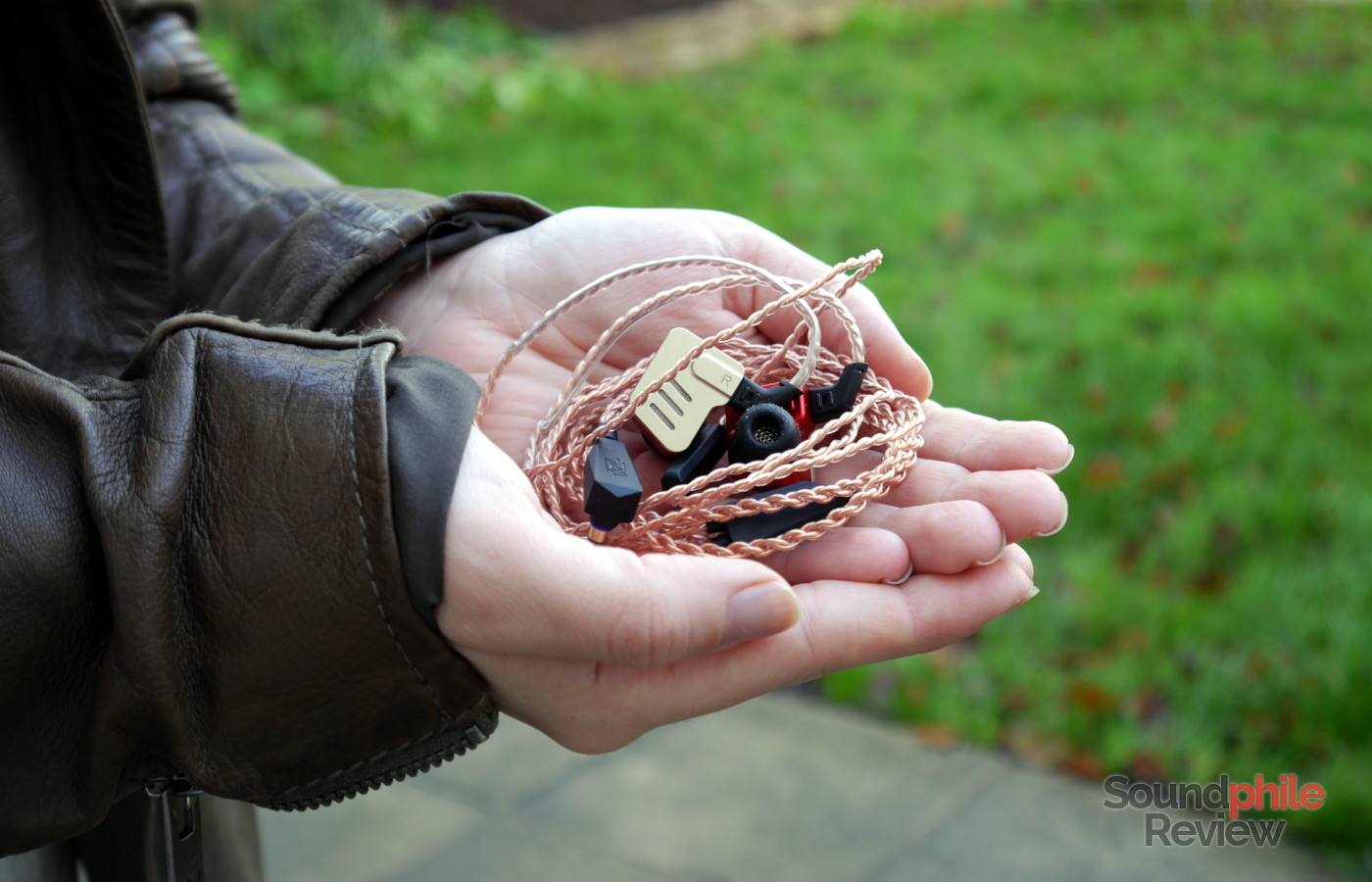
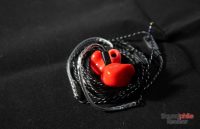

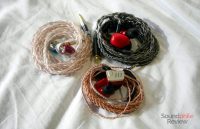


“Senza Paura” by Ornella Vanoni, Toquinho and Vinicius De Moraes – congratulations for this one. Sometimes I think, that I’m the only human on planet, that listens to italian music from the 70’s to 90’s. And I think it haves extreme musical and emotional qualities. Truly sound for audiophiles 😀 Fabio Concato, Ivan Graziani, Nino Buonocore, Amedeo Minghi, Eduardo De Crescenzo, Francesco Guccini, Carla Bissi (a.k.a “Alice”) just to name a few.
Greetings to you and your beautiful country!
Greetings to you, Alex, and thank you for your comment! I’m really glad you like Italian music and this track in particular!
Enjoy the festive season!
Many thanks for your honest reviews, thanks to them I have on my hands (in my ears) as10 and ba10. After buying ba10, I, on the advice of another site, extracted foam foam from the sound guides. It is glued to the net from the inside. After this procedure, the detailing was immediately added, and the tightness of medium to high was revealed. Could you experiment and describe your feelings after this? The process is reversible, if you do not like it, you can always put the foam back. I always listen to your opinion and have never lost!
Actually I found that wearing them improperly sounds better, with the top casing over the Tragus ( https://en.wikipedia.org/wiki/Tragus_(ear) ) a billion times better.
It sounds amazing the psychical design ruins such great headphones